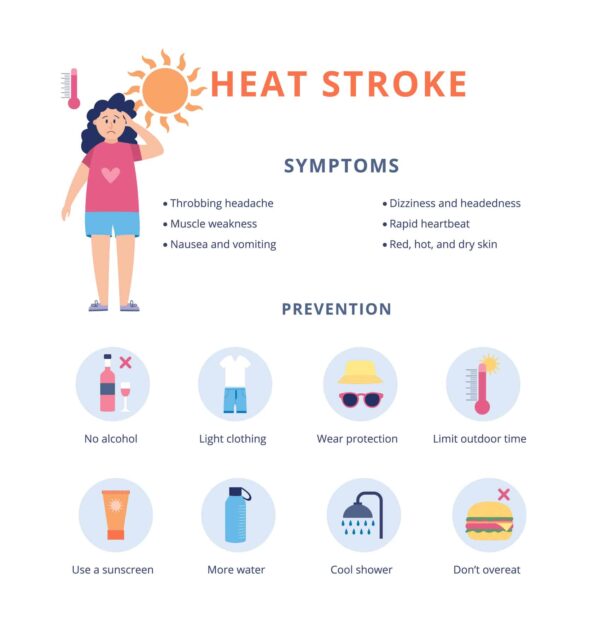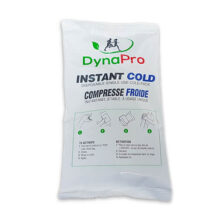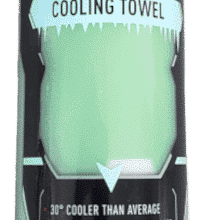Quench Gum
Login For Health Care Pricing
In Stock
Mueller Sports Medicine Quench® Gum is a classic sports gum that keeps you hydrated and performing at your peak until the final whistle. Try it and experience the benefits.

Heatstroke is a heat related illness that can affect any of us, particularly if we live in warmer climates or during a hot summer. We are also more susceptible to it when engaging in high intensity physical activity in hot conditions.
By high temperatures, we are referring to conditions that raise your core body temperature to levels of 40 degrees celsius or higher.
Heatstroke can be defined as a clinical constellation of symptoms that include a severe elevation in body temperature which typically, but not always, is greater than 40 degrees C (104F). This must be associated with clinical signs of central nervous system dysfunction like ataxia, delirium or seizures, in the setting of exposure to hot weather or strenuous physical exertion.
Heatstroke should be considered a life threatening medical emergency. If you think you have it, you should call 911 immediately. Left untreated for even a short period, it can cause damage to important organs like your brain, heart and kidneys. Soft tissues like muscles can also suffer damage. It’s important to understand that even physically fit individuals can experience the condition.
It’s also important to recognize that heatstroke is a completely distinct medical condition than dehydration. The measures (discussed below) for its treatment and/or prevention are also different. However, dehydration may over time lead to a heatstroke.
In this article, we will provide information to help you quickly recognize the signs of heat stroke. It is important to be able to recognize these signs early and seek medical treatment. We will also summarize the risk factors that increase the likelihood of its occurrence
We will then briefly discuss the most widespread approaches to heat stroke treatment. Finally, we will suggest ways for you to avoid heat stroke or at least reduce the likelihood of its occurrence.
As we have mentioned elsewhere in this site, the opinions expressed in this article should not be considered professional medical advice.
As we have mentioned, it is critical to recognize the signs of heatstroke in order to take timely action. These signs and symptoms include:
As we have already mentioned, heatstroke is a dangerous medical condition. Left untreated, it can result in serious organ damage. Swelling of the brain or other vital organs such as the heart can result. These in turn can lead to death.
The following factors may increase your risk of having a heat stroke;
Heatstroke can progress to multiorgan dysfunction syndrome. Therefore, rapid, effective cooling followed by close monitoring and effective treatment for injured organs are fundamental to treatment success.
The first step in treating heat stroke should be to call 911. While waiting for the emergency services to arrive, the patient should be moved to a cooler location e.g. indoors or into the shade.
Any excess clothing should be removed in order to reduce core body temperature. In addition, we would suggest taking whatever other steps may be feasible to lower body temperature. This may include immersing him/her in a tub of cool water or spray with cool water. Switch on air conditioning if it is available.
Wrapping in a cool towel (e.g. the uCool Towel) is another step that can reduce the risk from heat stroke. Use of a cold pack is another. Try to focus your cooling efforts on the neck, head armpits and groin areas. Cooling measures should be stopped once the core temperature has dropped to 38 to 39 degrees Celcius.
In addition to various cooling measures, adequate rehydration is another important treatment component.
Certain drugs sometimes have a role in management. For example, benzodiazepines could be considered for the shivering agitated patient. There is no role for antipyretics like paracetamol (tylenol) and they may be toxic to the liver.

Heat stroke is often preceded by another clinical condition called heat exhaustion. Preventative measures should be undertaken promptly in order to prevent progression of heat exhaustion to heat stroke. Signs of heat exhaustion include headache, dizziness, loss of appetite, nausea, excessive sweating and thirst, pale, clammy skin as well as cramps in the arms, legs and stomach.
Due to its life threatening potential, you should aim to prevent heat stroke if at all possible. Some suggestions for achieving this area:

Login For Health Care Pricing
In Stock
Mueller Sports Medicine Quench® Gum is a classic sports gum that keeps you hydrated and performing at your peak until the final whistle. Try it and experience the benefits.

Login For Health Care Pricing
In Stock
The DynaPro Single Use Instant Cold Pack will help reduce pain, swelling and bleeding in the immediate aftermath of suffering an acute injury.

Login For Health Care Pricing
Typically Ships in 1-2 weeks
The McDavid uCool Cooling Towel helps you fight the heat by staying 30 degrees colder than average body temperatures when wet.